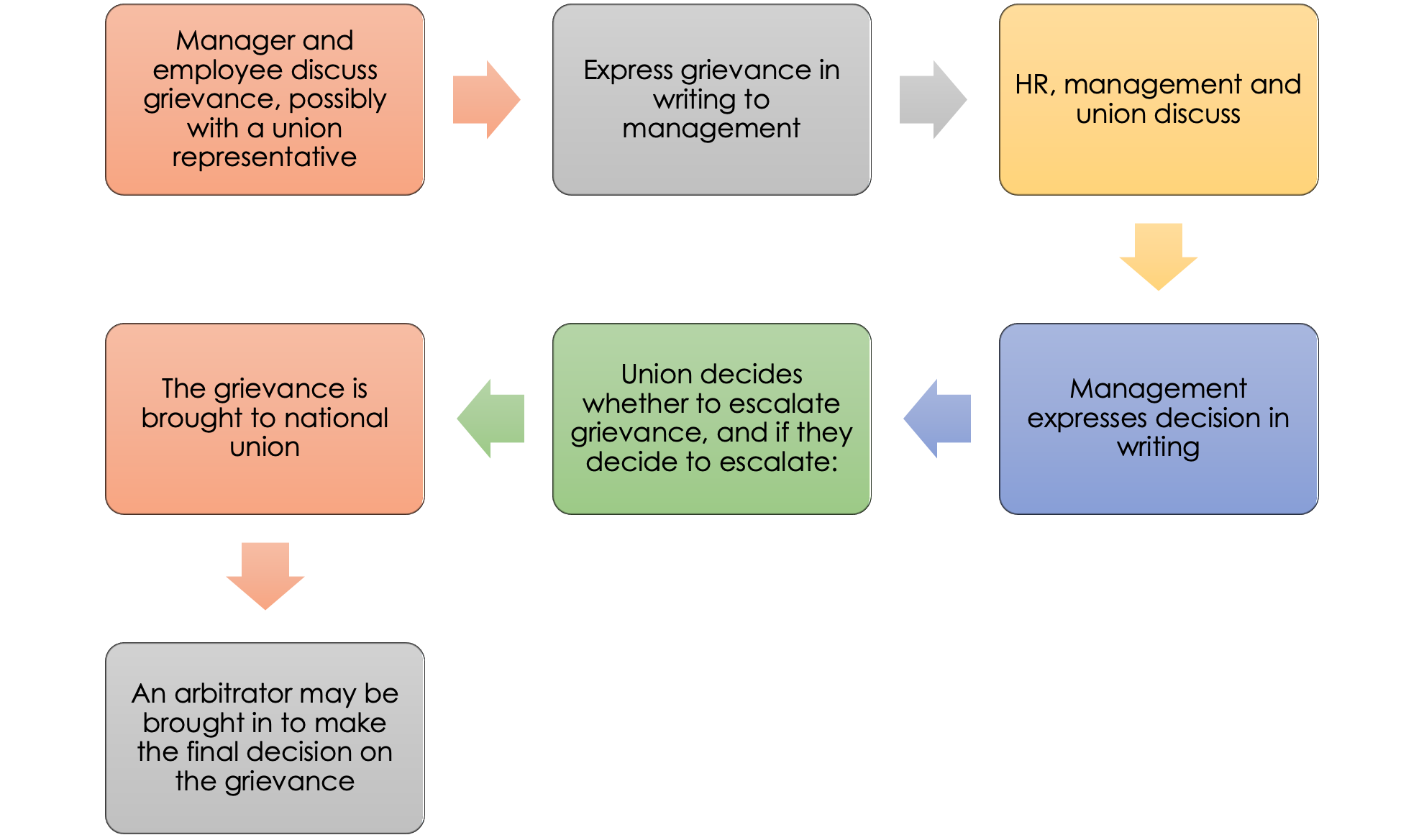Administration of the Collective Bargaining Agreement
Learning Objective
- Be able to explain how to manage the grievance process.
Once an agreement is in place, there still may be disagreements in how management interprets it. The grievance procedure outlines the process by which perceived contract violations can be handled. This will be the focus of our next section.
Procedures for Grievances
A violation of the contract terms or perception of violation normally results in a grievance. The process is specific to each contract, so we will discuss the process in generalities. A grievance is normally initiated by an employee and then handled by union representatives. Most contracts specify how the grievance is to be initiated, the steps to complete the procedure, and identification of representatives from both sides who will hear the grievance. Normally, the HR department is involved in most steps of this process. Since HRM has intimate knowledge of the contract, it makes sense for them to be involved. The basic process is shown in Figure 10.4 “A Sample Grievance Process”.
Figure 10.4 – A Sample Grievance Process

The first step is normally an informal conversation with the manager, employee, and possibly a union representative. Many grievances never go further than this step, because often the complaint is a result of a misunderstanding.
If the complaint is unresolved at this point, the union will normally initiate the grievance process by formally expressing it in writing. At this time, HR and management may discuss the grievance with a union representative. If the result is unsatisfactory to both parties, the complaint may be brought to the company’s union grievance committee. This can be in the form of an informal meeting or a more formal hearing.
After discussion, management will then submit a formalized response to the grievance. It may decide to remedy the grievance or may outline why the complaint does not violate the contract. At this point, the process is escalated.
Further discussion will likely occur, and if management and the union cannot come to an agreement, the dispute will normally be brought to a national union officer, who will work with management to try and resolve the issue. A mediator may be called in, who acts as an impartial third party and tries to resolve the issue. Any recommendation made by the mediator is not binding for either of the parties involved. If no resolution develops, an arbitrator might be asked to review the evidence and make a decision. An arbitrator an impartial third party who is selected by both parties and who ultimately makes a binding decision in the situation. Thus arbitration is the final aspect of a grievance.
Some examples of grievances might include the following:
- One employee was promoted over another, even though she had seniority.
- An employee does not have the tools needed to perform his job, as outlined in the contract.
- An employee was terminated, although the termination violated the rules of the contract.
- An employee was improperly trained on chemical handling in a department.
Most grievances fall within one of four categories. There are individual/personal grievances, in which one member of the union feels he or she has been mistreated. A group grievance occurs if several union members have been mistreated in the same way. A principle grievance deals with basic contract issues surrounding seniority or pay, for example. If an employee or group is not willing to formally file a grievance, the union may file a union or policy grievance on behalf of that individual or group.
References
Associated Press, “NFL, Union Agree to Mediation,” February 17, 2011, accessed August 15, 2011, http://msn.foxsports.com/nfl/story/NFL-players-union-agree-to-mediation-federal-for-labor-talks-CBA-021711.

